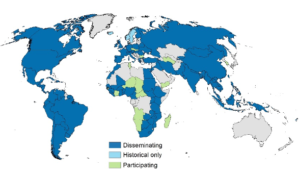By Matthew Sobek
IPUMS is pleased to announce a major usability upgrade to our online analysis tool: the ability to download tabular output as a CSV file. No more cleaning up html!
The IPUMS online analysis tool has been a big hit with our users, and we’ve made it available for most of the IPUMS data collections. If you haven’t tried it, you should. We even have a tutorial.
Despite its popularity with users, the SDA (Survey Documentation and Analysis) software that drives the system has always had a significant limitation: it produces tables in html format, which is fine for web display but highly inconvenient for cutting and pasting into documents.
In spring 2020 the SDA folks at the Institute for Scientific Analysis were looking for a new project and thoughtfully asked what change we thought users would most appreciate. We responded immediately “CSV downloads,” and within a few months, they had produced a working version of the software that incorporates the new feature. We have now upgraded all the IPUMS sites that offer online analysis to the new version of SDA.

